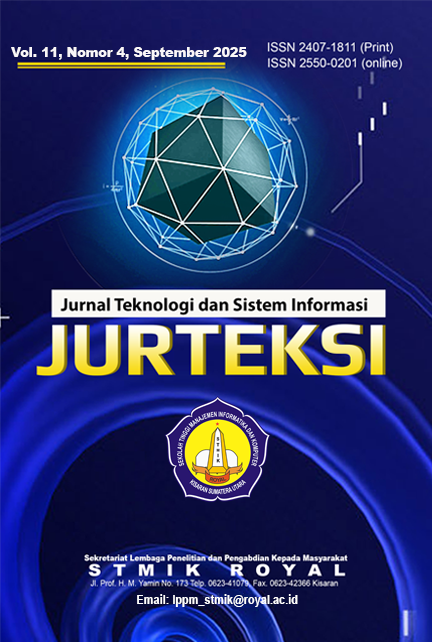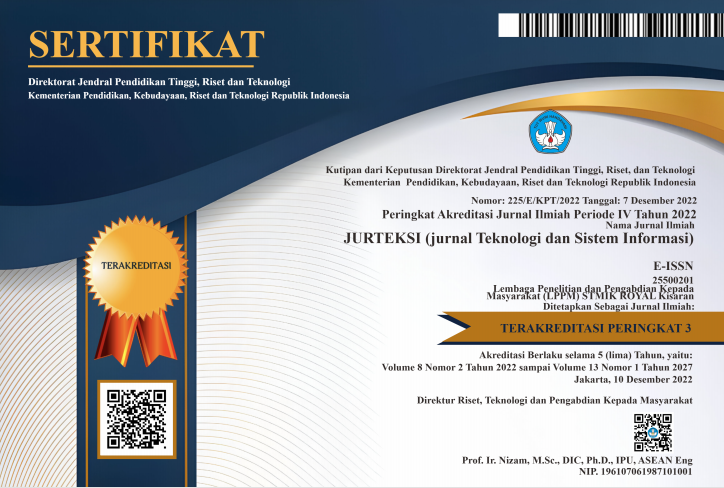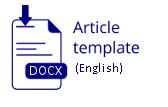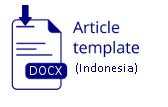DEVELOPMENT INTEGRATIVE MODEL FOR ACADEMIC INFORMATION SYSTEMS USING UTAUT, DELONE&MCLEAN, AND TTF
Abstract
Abstract: The Academic Information System (SIAKAD) plays an important role in supporting the management of academic administration in higher education institutions, particularly for students. ABC University has implemented SIAKAD since 2018 to facilitate administrative ativities in line with its motto of a high technology campus. This study aims to measure the sucess of SIAKAD usage from the aspects of acceptance, satisfaction, suitability, and perceived benefits. The integration of the Unified Theory of Acceptance and Use of Technology (UTAUT), DeLone & McLean, and Task Technology Fit (TTF) models was carried out to obain a more comprehensive overview in assessing the success of SIAKAD. UTAUT explains the factors influencing the intention to use, DeLone & McLean emphasizes the relationship between system quality and both user satisfaction and net benefits, while TTF evaluates the fit between technology and user tasks. By combining these three models, the study addresses the limitations of each model and produces a more holistic approach in measuring acceptance, success, and the appropriateness of system use. The testing was conducted using SPSS and Structural Equation Modeling (SEM) analysis through AMOS.
Keywords: siakad; utaut; delone&mclean; penerimaan teknologi; sem
References
J. Schöpfel, O. Azeroual, and G. Saake, “Implementation and user acceptance of research information systems: An empirical survey of German universities and research organisations,” DTA, vol. 54, no. 1, pp. 1–15, Mar. 2020, doi: 10.1108/DTA-01-2019-0009.
Rulinawaty et al., “Investigating the influence of the updated DeLone and McLean information system (IS) success model on the effective-ness of learning management system (LMS) implementation,” Cogent Education, vol. 11, no. 1, p. 2365611, Dec. 2024, doi: 10.1080/2331186X.2024.2365611.
J. McLeod and E. Lomas, “Record DNA: reconceptualising digital rec-ords as the future evidence base,” Arch Sci, vol. 23, no. 3, pp. 411–446, Sept. 2023, doi: 10.1007/s10502-023-09414-w.
M. Mawarti and I. Seprina, “Ana-lisis Kesuksesan Sistem Informasi Akademik ( Siakad) Menggunakan Model Delone Dan Mclean (Studi Kasus Stihpada Palembang),” JIPI (Jurnal Ilmiah Penelitian dan Pem-belajaran Informatika), vol. 8, no. 2, pp. 393–406, May 2023, doi: 10.29100/jipi.v8i2.3462.
D. K. Pramudito, A. Nuryana, S. Assery, H. Purnomo, and A. A. Bakri, “Application of Unified Theory of Acceptance, Use of Technology Model and Delone & Mclean Success Model to Analyze Use Behavior in Mobile Commerce Applications,” Jurnal Informasi dan Teknologi, pp. 1–6, Aug. 2023, doi: 10.60083/jidt.v5i3.382.
P. Wijayanti, I. S. Mohamed, and D. Daud, “Computerized accounting in-formation systems: An application of task technology fit model for micro-finance,” International Journal of Information Management Data Insights, vol. 4, no. 1, p. 100224, Apr. 2024, doi: 10.1016/j.jjimei.2024.100224.
R. Rahmatullah et al., “A study of user satisfaction and net benefits in indonesia through the DeLone and McLean Model for E-Government success,” Discov Sustain, vol. 6, no. 1, p. 710, July 2025, doi: 10.1007/s43621-025-01645-4.
H. Zheng, F. Han, Y. Huang, Y. Wu, and X. Wu, “Factors influenc-ing behavioral intention to use e-learning in higher education during the COVID-19 pandemic: A meta-analytic review based on the UTAUT2 model,” Educ Inf Technol, vol. 30, no. 9, pp. 12015–12053, June 2025, doi: 10.1007/s10639-024-13299-2.
A. S. Izkair and M. M. Lakulu, “Gender moderator on the factors that affect intention to use of mobile learning,” Elementary Education Online, vol. 20, no. 4, pp. 480–489, 2021.
B. Cabellos, F. Siddiq, and R. Scherer, “The moderating role of school facilitating conditions and at-titudes towards ICT on teachers’ ICT use and emphasis on develop-ing students’ digital skills,” Com-puters in Human Behavior, vol. 150, p. 107994, Jan. 2024, doi: 10.1016/j.chb.2023.107994.
N. A. Narendrar, J. E. Suseno, and D. M. K. Nugraheni, “Factors Influ-encing Interest in Continuing Use of e-Wallet Using the Technology Ac-ceptance Model and Task-Technology FIT,” Mimbar Ilmu, vol. 28, no. 2, pp. 221–230, Aug. 2023, doi: 10.23887/mi.v28i2.61228.
F.-W. Lim, A. Fakhrorazi, R. B. Ikh-san, K. Silitonga, W.-K. Loke, and N. Abdullah, “Personal innovativeness and facilitating conditions in shaping the outlooks toward m-banking adoption among generation Y in Malaysia,” International Journal of Electrical and Computer Engineering (IJECE), vol. 13, no. 4, pp. 4101–4111, Aug. 2023, doi: 10.11591/ijece.v13i4.pp4101-4111.
D. S. Elnusa, L. Padmawidjaja, and I. R. Salim, “The Influence of Ser-vice Quality on SINTA Acceptance Using the TAM Method: A Case Study of Lecturers at X University,” Jurnal Entrepreneur dan Entrepreneurship, vol. 14, no. 1, pp. 51–64, Mar. 2025, doi: 10.37715/jee.v14i1.5586.
D. P. Karyaningtiyas, A. Yamin, and K. Hermanto, “Analisis Pengaruh Minat Pemanfaatan dan Penggunaan SIAKAD sebagai Me-dia E-learning di Universitas Teknologi Sumbawa | JIIP - Jurnal Ilmiah Ilmu Pendidikan”, Accessed: Sept. 30, 2025. [Online]. Available: https://jiip.stkipyapisdompu.ac.id/jiip/index.php/JIIP/article/view/783?utm_source=chatgpt.com
I. Santosa, E. Sutoyo, and R. Fauzi, “Pengembangan Ulang Sistem In-formasi Akademik SMK demi Pem-anfaatan dan Peningkatan yang Berkelanjutan,” Warta LPM, pp. 146–156, Apr. 2023, doi: 10.23917/warta.v26i2.1461.













